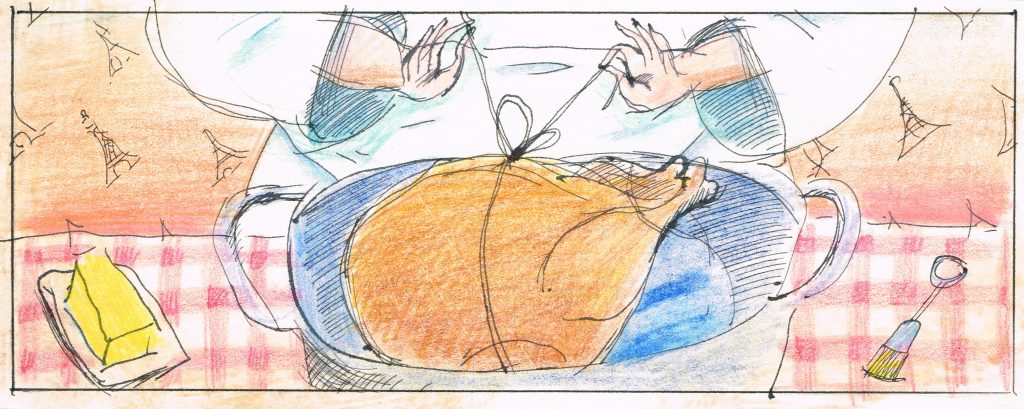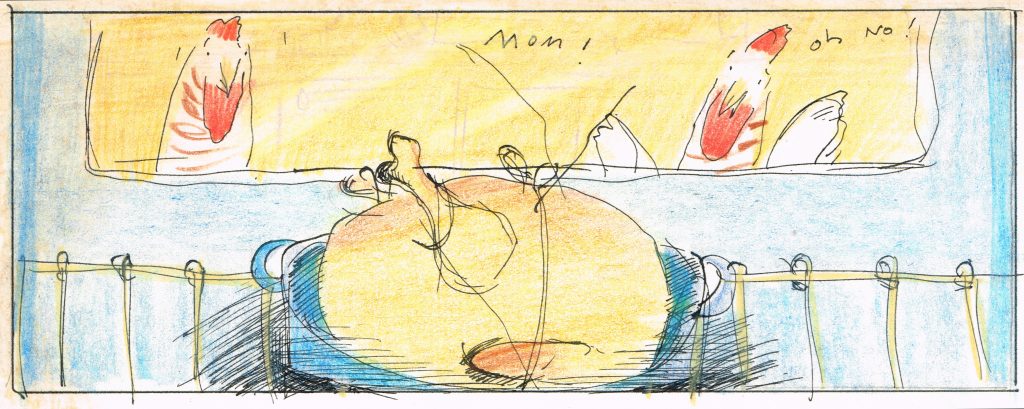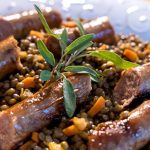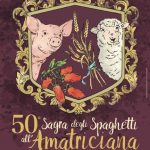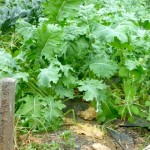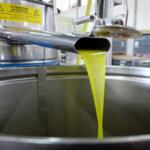
John Ruskin once described this watery city as a ‘ghost upon the sands of the sea, so weak—so quiet–so bereft of all but her loveliness’…. [153 years] later, he would be more likely to compare this packed tourist magnet to a shopping mall during the sales season than to a shadowy mirage…. But Ruskin’s Venice still exists…. Sitting on a historic fishing boat on a recent July evening, with the sun setting over the island of Torcello and the sound of the gull cries splitting the silence of the seemingly endless lagoon, a visitor might even get a sense of what the Victorian thinker was going on about….”—Elisabetta Povoledo, International Herald Tribune
So said the Italian journalist who has been writing about Italy for The New York Times and its affiliates for a quarter century, covering everything from Italian governments to popes to Rome’s feral cats. She knows that our culinary and cultural cruise on a traditional Venetian boat is the real thing—an exploration of insider’s hidden city and its archipelago, its natural and cultural life. Venice and its lagoon islands were proclaimed a UNESCO World Heritage Site in 1987, yet few travelers ever see it. Its shallow waters must be navigated by flat-bottom boat built for the labyrinth of 200 canals and 180 islands by sailors who know its networks intimately. The Eolo, a 52-foot traditional restored bragozzo, fishing vessel, is such a boat and our Venetian host Mauro Stoppa is such a sailor.

Raising the Eolo’s sail on the Venetian lagoon.
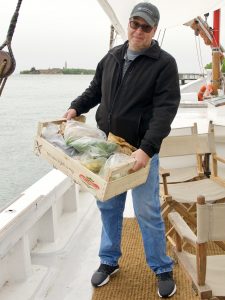
One of our passengers lends a hand with the day’s delivery.
If you think you’ve already seen Venice, think again. Have you watched a cloud of flamingoes drift over a lagoon as clear as glass? Have you found your way to the island where the quarantine was invented in the 16th century, resulting in the salvation of Venice’s population during the plague? Have you lunched on board a historic sailing vessel at anchor, eating deliciously prepared sea bass delivered boat-side by the fishermen—so fresh, it tastes like it just leapt into your plate?
Or violet artichokes grown on an island nearby, a Byzantine cathedral as a backdrop? Have you ever had a cooking lesson in a ship’s galley from Venetian cooks who show you how to prepare authentic local delicacies? Have you visited the workshop of Venetian craftsmen whose forebears have been weaving exquisite fabrics that have clothed royalty and potentates for four centuries? Have you walked the backstreets and alleys of Venice with its colorful local life and floating vegetable markets? Do you know the authentic Venetian restaurants where the locals go to dine? Come with us, we’ll take you there. With one crew member for every two guests, you will sail in comfort and ease, helping to raise and lower the sails, if you like. With native guides at every stop, you’ll see not only the most famous sights, but also be drawn into a very private Venice that exists behind the spectacle.
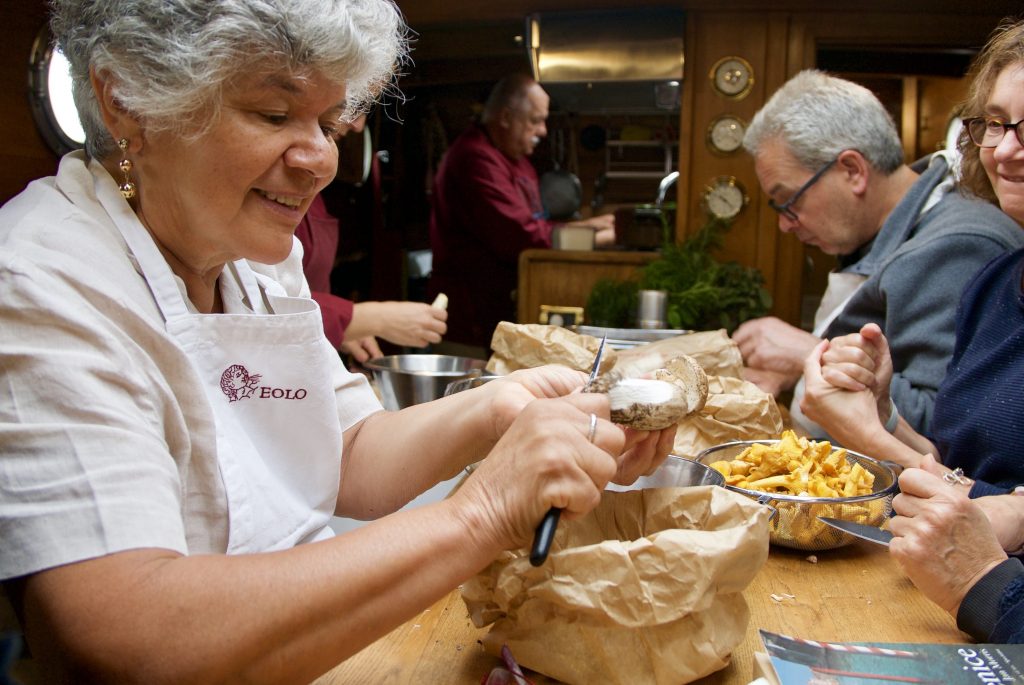
Our guests learn to cook Venetian fare in the galley.
We’re now taking reservations for up to ten guests for our September 15-21 sail. Each time we tour, we make a new plan: chart a course for an island our guests haven’t seen before, choose another of Venice’s charming historic inns, vary the menu based on the catch of the day and the harvest of the season, or plot a different route on our walking tours. Find the day-by-day details and overall itinerary here:
2018 VENICE BY BOAT
Culinary Sailing Cruises of Venice and its Lagoon
June 2-8 and September 15-21, 2018
Itinerary
Day 1 — Meet on the island of Certosa at 3 p.m. (time to be confirmed once we know each person’s travel details). Transfer by private water taxi to Mazzorbo and the Venissa Hotel, a former convent and wine estate on its own bucolic island, top-rated by The New York Times, Michelin, and Travel + Leisure. After settling into our rooms, meet our native Buranese guide for a walking tour of Mazzorbo and Burano, two enchanting islands joined together by a pedestrian bridge. Overnight and a splendid dinner at the Venissa.
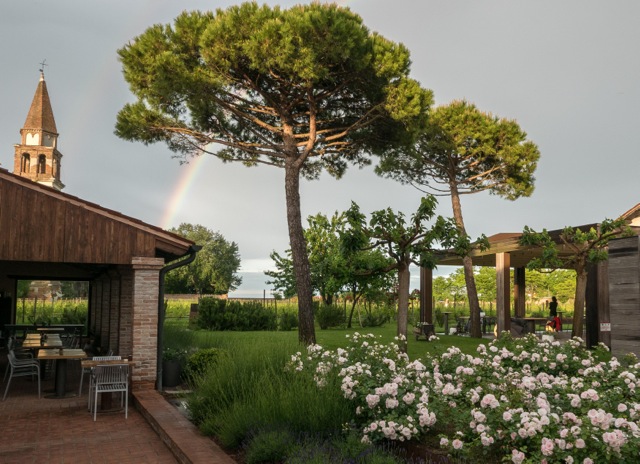
A magical first night at the Venissa inn and restaurant on Mazzorbo.
Day 2 — After breakfast, Mauro guides the Eolo to the front door of the Venissa and we board. Our first stop is the National Archeological Museum of Altino on the site of the original settlement of Venice. Private tour of the museum, a repository of relics and artifacts related to the history of Venice and its lagoon. Return to the Eolo for lunch, followed by a visit and guided tour of the island of Torcello, where subsequent foundations of Venice were laid 1,000 years ago. Reboard and shove off for Cavallino and the historic Locanda alle Porte 1632 inn and restaurant, once Venice’s customs house. Dinner in a private, typical “bilancia” or “trabuch,” a historic fisherman’s hut suspended over the water. The seafood served is the owner’s catch of the day. Overnight at the locanda.
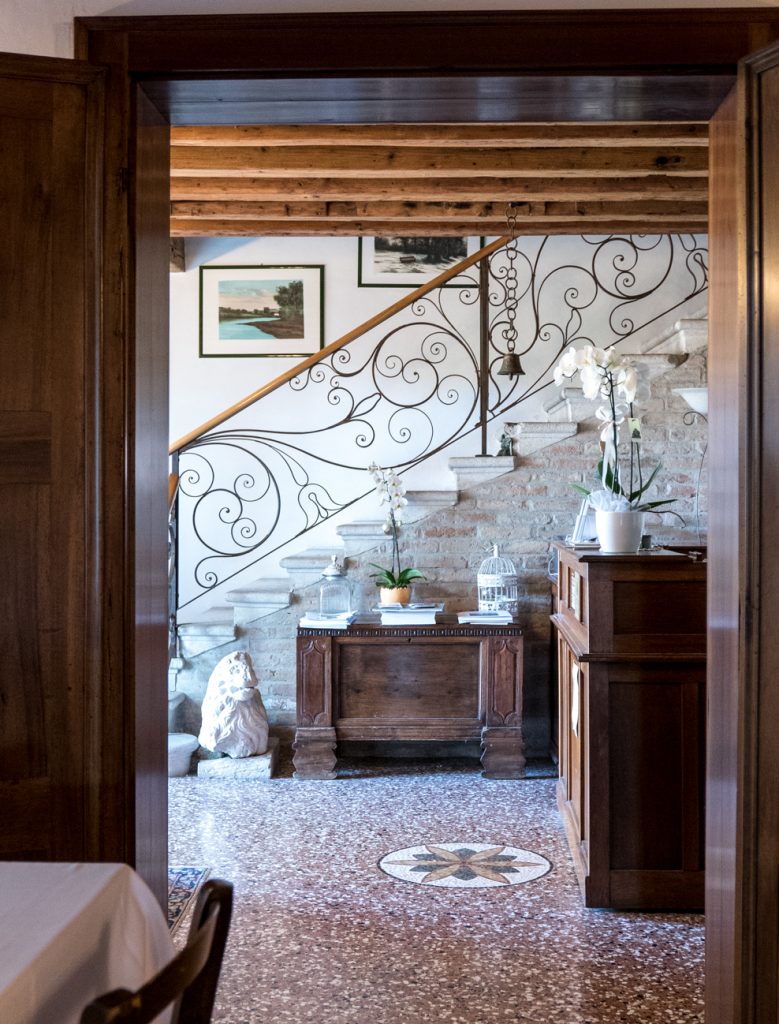
Enter the warm and welcoming Locanda alle Porte 1632.
Day 3 — After breakfast, board the Eolo and head for the southern lagoon and the island of Lazzaretto Nuovo, where all ships, their cargo and passengers were quarantined during the times of the bubonic plague before being permitted entry to the main island of Venice. Guided tour by archeologists working on the excavation. Our next stop is Mazzorbo, a charming village on the Lido. Settle into our hotel accommodations at Ca’ Alberti, a restored 14th century villa. Meet for dinner at a typical trattoria near our hotel.
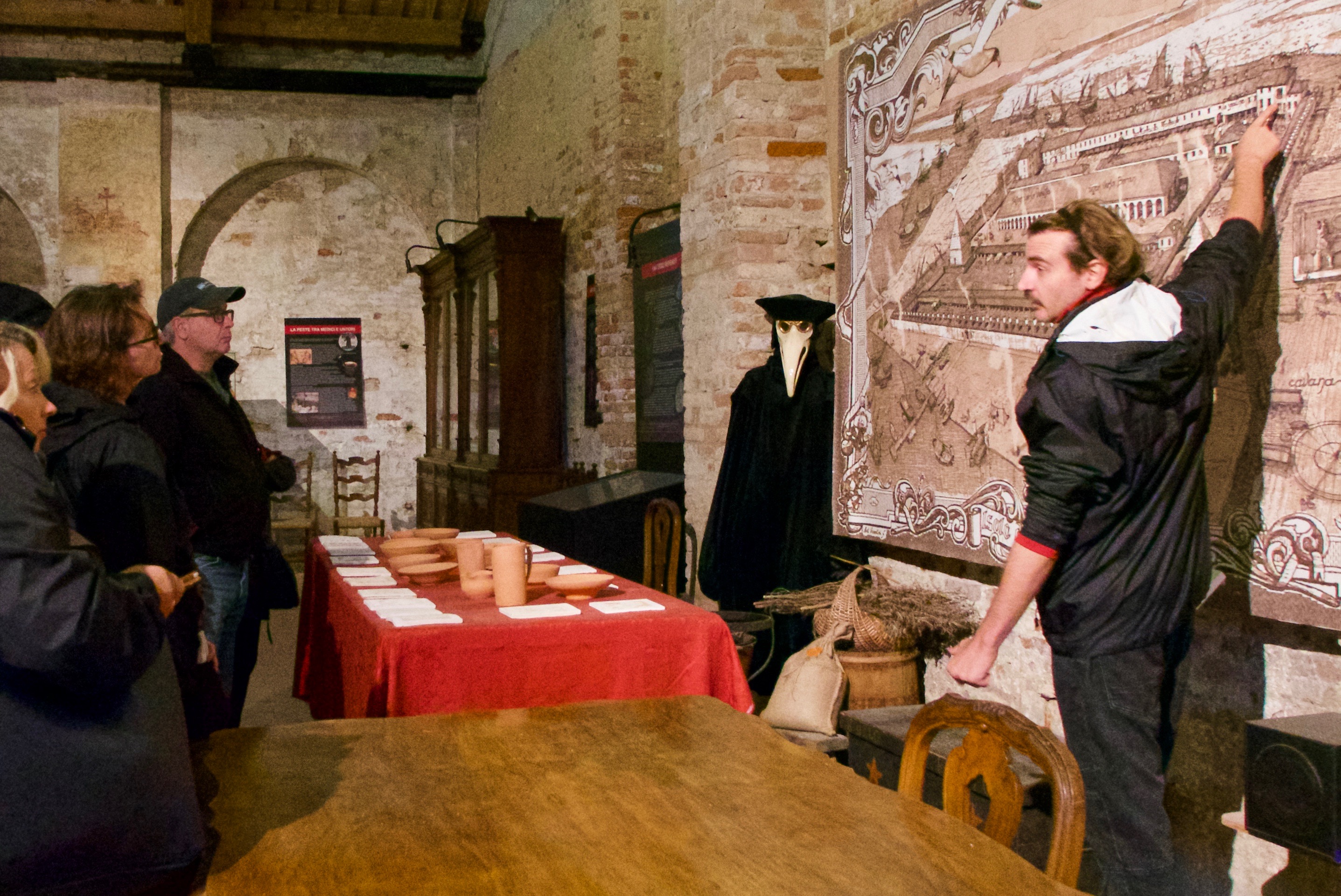
The chief archeologist at Lazaretto Nuovo explains the island’s strange history.
Day 4 — Breakfast at Ca’ Alberti, then reboard the Eolo. Sail for the island of Valle Zappa, a unique wildlife sanctuary and the site of a spectacular villa in the Austrian style. From here we are privy to the most beautiful views of the lagoon. Guided visit followed by lunch at anchor. Transfer by private water taxi to Venice proper at about 5 p.m. Arrive at our accommodations at Palazzo Morosini degli Spezieri, a beautifully renovated historic palace overlooking a colorful piazza near the famous Rialto pedestrian bridge and market. Explore Venice and eat dinner on your own.
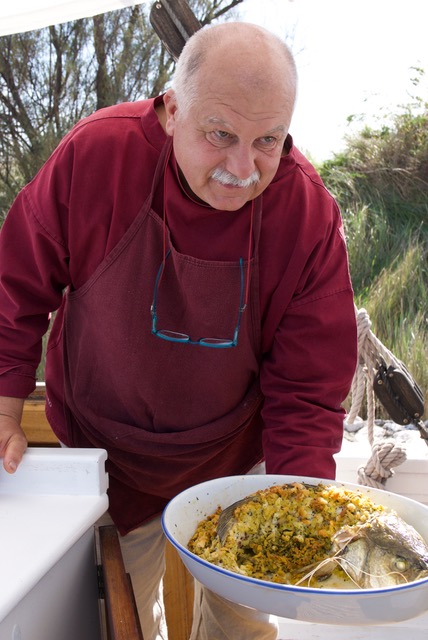
Our host and galley cook, Mauro Stoppa, serves freshly caught roasted sea bass for lunch.
Days 5-7 — Remain in Venice proper. Breakfast before Laura Sabbadin, our native guide, collects us for unique walking tours of the famous sites, fascinating backstreets, and hidden treasures unknown to most tourists.
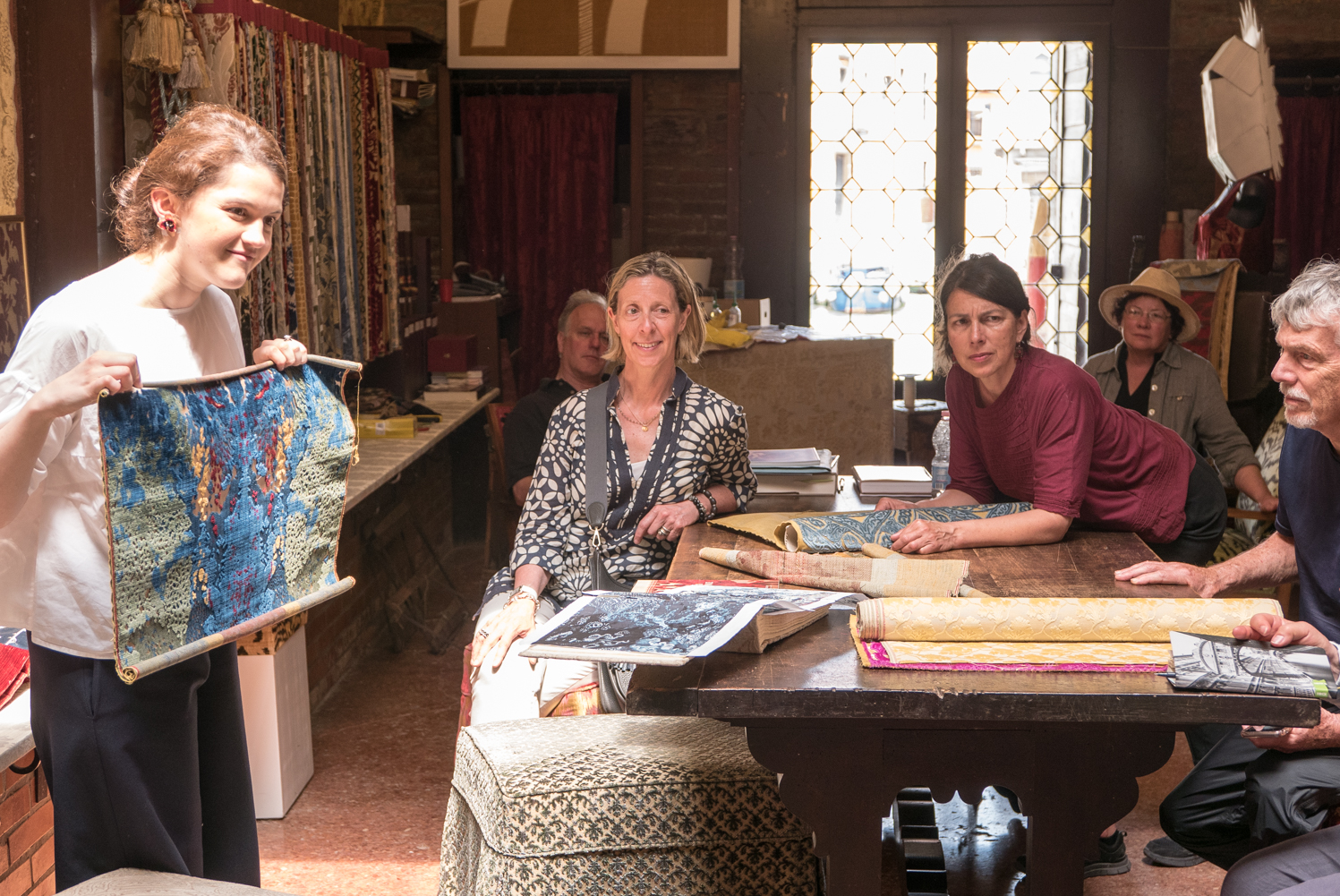
At the historic Bevilacqua weaver with our native guide, Laura Sabbadin.
Day 6 — Farewell dinner in Venice with Mauro, Julia and all guests.
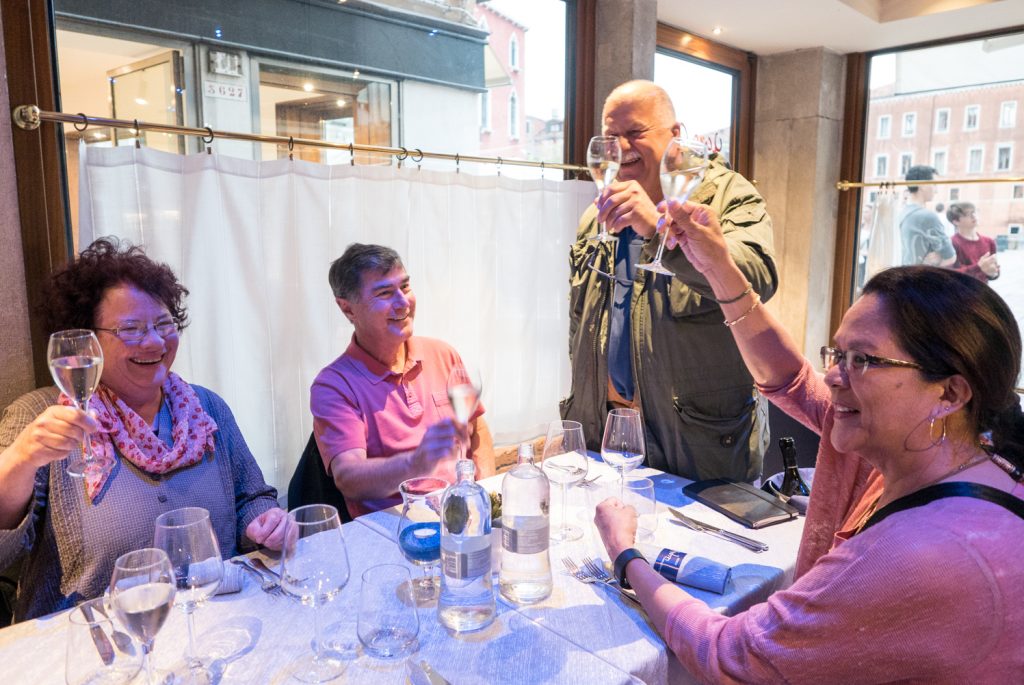
Veni etiam, come again!
Day 7 —Breakfast at our hotel and guest departures from there.
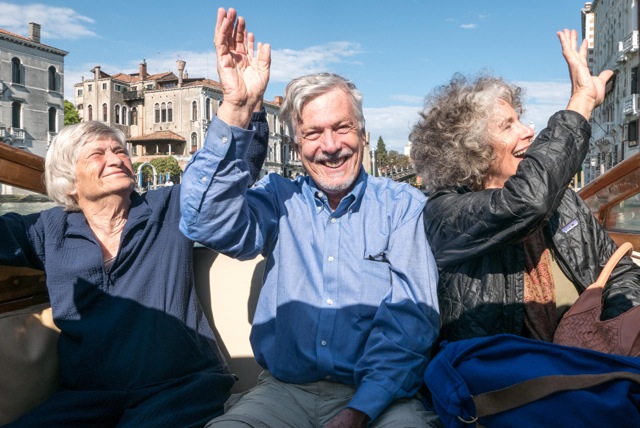
Arrivederci, Venezia, a presto—see you again soon.
Rates and Particulars:
- 4,600 Euros per person including accommodations as detailed, breakfasts, lunches and dinners as described, private visits as per itinerary, all entrance fees, cooking lessons on board the Eolo at your discretion, the service of your tour guide(s). Rates based on double occupancy; 20% more for single occupancy.
- 10% deposit upon reservation, refunded if the minimum of 6 guests is not reached.
- 40% upon confirmation, the balance 30 days before departure.
- Minimum 6 guests. Maximum, 10 guests.
Not Included
- Flights, travel insurance, items of personal expenditure (e.g. telephone calls, laundry etc.), discretionary gratuities to boatmen and guides, government levies or taxes introduced after publication of this program (May 27, 2018).
- Please note that if circumstances beyond our control necessitate some alteration to the itinerary shown, you will be notified of any such changes as soon as possible.
Contact: For more information and reservations: Write to Mauro Stoppa at the following email address info@cruisingvenice.com or email me with any questions you might have.
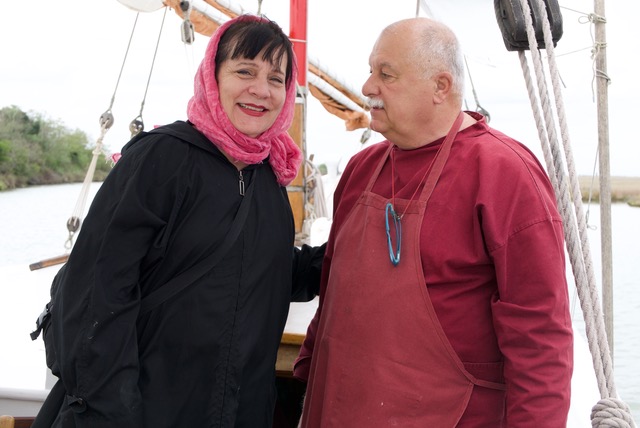
On the Eolo’s autumn cruise with Mauro.
Photographs copyright Nathan Hoyt/Forktales 2018


